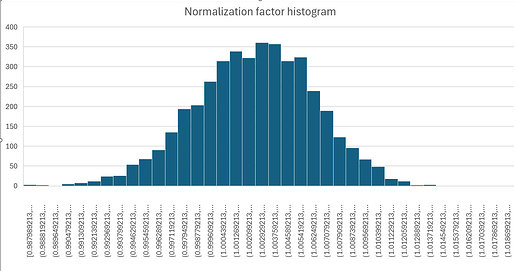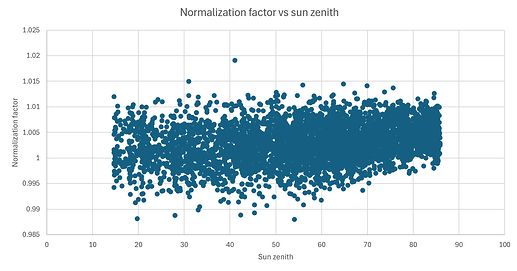Hi all,
I have a question regarding the results of rtrace when measuring irradiance. When looking at the results of rtrace, we noticed that we were “missing” some irradiance, in the sense that we were not getting the expected GHI values when measuring at the ground.
It is easy to reproduce the issue. I created a sky using gendaylit, with the G option. The irradiance values are GHI = 1000 W/m2 and DHI = 200 W/m2. I added a flat plane representing the ground to the scene, and then I measured the irradiance values at the center of the plane, with the ray being perfectly perpendicular to the surface.
This is the gendaylit command:
gendaylit -ang 80.0 0.0 -G 800.0 200.0 -g 0.0 -O 1
This is the ground OBJ file:
usemtl terrain_mat
v 0.0000 0.0000 0.0000
v 100.0000 0.0000 0.0000
v 100.0000 100.0000 0.0000
v 0.0000 100.0000 0.0000
f 1 2 3
f 1 3 4
Which we then convert to a rad file using obj2rad -o ground OBJ_FILE. We then use the oconv command to generate the octree.
And this is the rtrace command:
rtrace -i -faa -ab 1 -aa 0.2 -ar 20 -ad 128 -as 64 -h -ov OCT_FILE
50 50 0.01 0 0 -1
We reduced the precision of the rtrace calculation to optimize performance. Our first suspicion was that this decision was the issue, but increasing the precision by tweaking the parameters does not change the result.
Doing this, I expected to get the GHI value of 1000 W/m2. However, I never get that exact value, instead I always get a value which is lower, in the range of 990-998 W/m2. The concern is not regarding the variability; it is regarding the bias. The measured value is always lower than the expected value.
I also wanted to mention that the issue is only apparent when the DHI value is higher than say 30 W/m2. I feel like this should give us some clue regarding the root cause of the difference in results but that is as far as I got.
The context of our efforts is the development of an energy yield calculation for Photovoltaic plants. We started looking into this issue because we noticed that the frontal irradiance values were consistently lower than the results we get from our previous model.
Please let me know if any other information is needed.
Thanks in advance for your answers,
Félix


